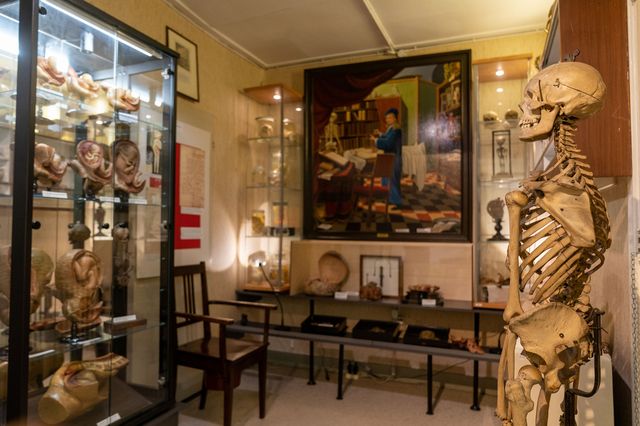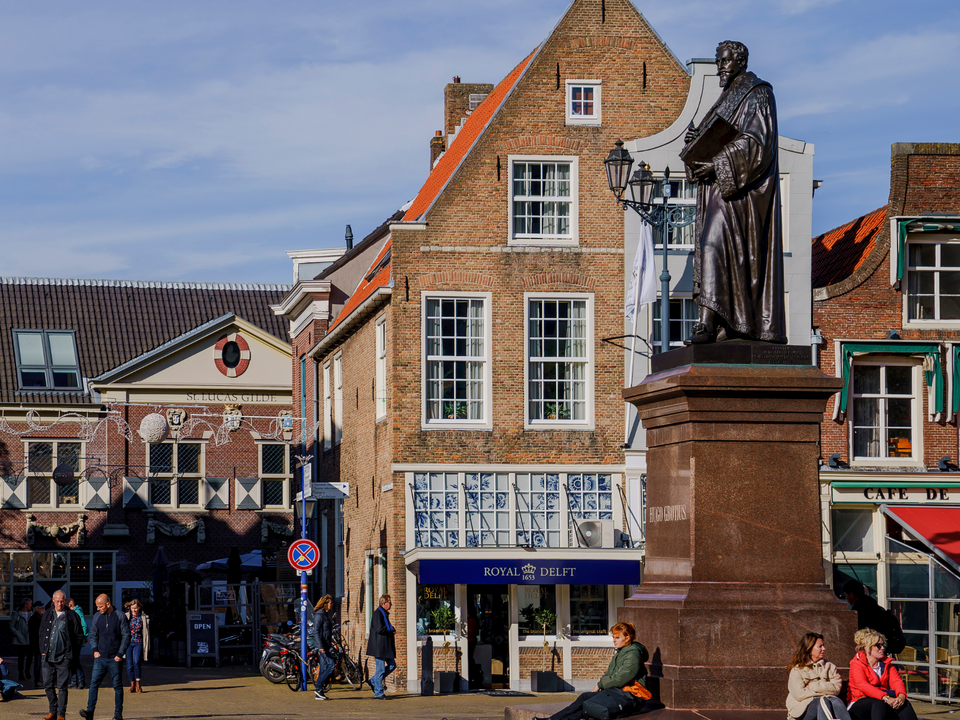Johannes Vermeer is one of Delft’s most famous 17th-century painters. But during those times, Delft was the home of many more people who achieved extraordinary things. Read all about Vermeer’s contemporaries and their connections to Delft and Vermeer!
Hugo de Groot
Portrait of Hugo Grotius 1631, by Michiel van Mierevelt, Museum Prinsenhof Delft
1583-1645
Hugo de Groot was born in Delft on 10 April 1583. It soon became clear that he was a child prodigy, astounding everyone with his intellect and knowledge. Both his father and grandfather had served as mayor of Delft and his father also had a keen interest in science and art. So, even as a young boy, Hugo got to know many scientists, such as the humanist Justus Lipsius as well as mathematician and physicist Simon Stevin.
At the age of eleven, Hugo started his studies at Leiden University, where he soon made his career as a legal scholar, lawyer, and diplomat. In addition to the spectacular story about how he escaped from his imprisonment, De Groot’s legacy is substantial. His philosophical views on peace, freedom and justice mattered greatly then and are perhaps more relevant than ever today. But for those who don’t know it, we’ll tell the famous story that went down in Dutch history as one of the greatest escapes ever. It tells about how Hugo escaped from Loevestein Castle on 22 March 1621, when he found a way to get himself locked inside a heavy book chest and was smuggled down the narrow staircases and out of the castle!

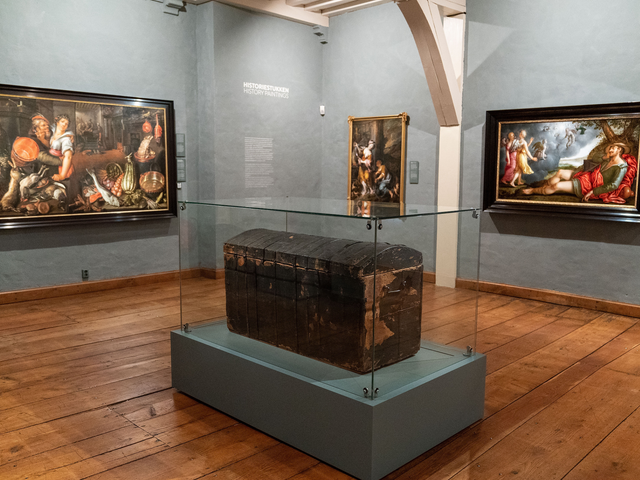

From 1572, Loevestein Castle was used as a state prison where political prisoners and those with non-conformist views were incarcerated. It was during his time at Loevestein that Hugo developed his ideas about peace, freedom and justice that would change the world. And these ideas are still very relevant today.
TIP: A statue of Hugo de Groot stands at the Markt in Delft. It was erected in 1886 to commemorate him.
Antoni van Leeuwenhoek
Portrait of Anthonie van Leeuwenhoek, Natural Philosopher and Zoologist in Delft, Jan Verkolje (I), 1680 - 1686 Rijksmuseum Amsterdam
1632-1723
Antonie van Leeuwenhoek was born in Delft in 1632. He gave himself the name Leeuwenhoek as his parents’ house was located inside the ‘Leeuwen’ gate. Antonie’s interest in astronomy, mathematics, physics, and chemistry was already active at a young age. And, without any scientific schooling or knowledge of other languages, he was the first to build a microscope. Antonie van Leeuwenhoek used his microscope to make many discoveries in the fields of biology and microscopy.
Johannes Vermeer and Van Leeuwenhoek also share a history, as Antonie was the executor of Johannes Vermeer’s will. This is why we can assume that they were close friends and it is likely that Antoni van Leeuwenhoek modelled for Vermeer’s paintings The Geographer and The Astronomer.
Van Leeuwenhoek died at the respectable age of 91 on 31 August 1723 and was interred in the Oude Kerk in Delft.
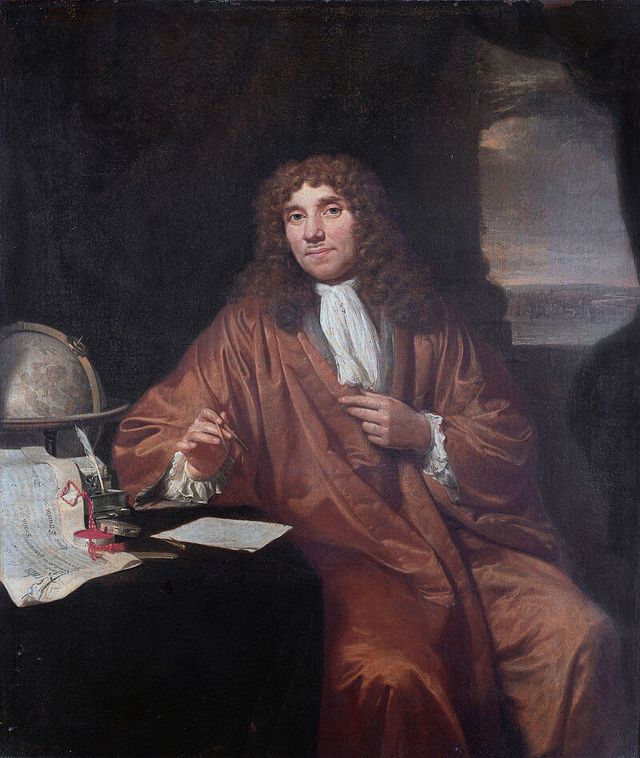

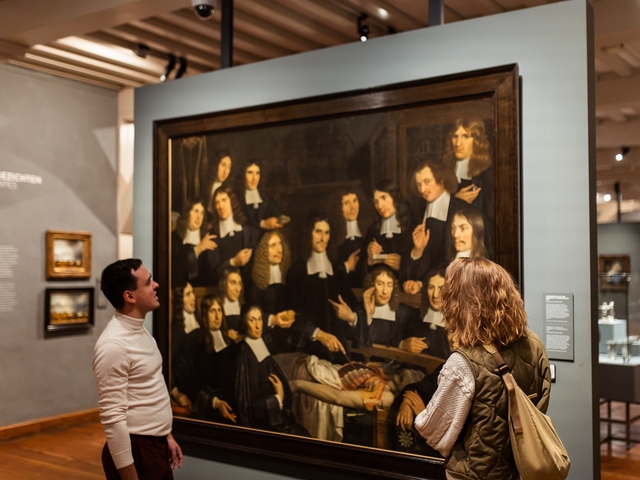
Pieter de Hooch
Pieter de Hooch (1629- after 1679), The Courtyard of a House in Delft, 1658, The National Gallery, Londen
1629-1684
The first sources indicating that Pieter de Hooch lived in Delft are dated August 1652. In 1654, De Hooch married Jannetje van der Burch, daughter of a Delft earthenware manufacturer. Of their seven children, two were born in Delft.
Pieter de Hooch was accepted by the Saint Luke’s Guild for artists and artistic craftspeople in Delft. It is very likely that Vermeer and De Hooch got to know one another here and that they influenced each other’s style of painting. Both men often painted women working inside their houses. Even so, the two painters each have their own very distinctive and recognisable style.
Painting The Courtyard of a House in Delft by Pieter de Hooch
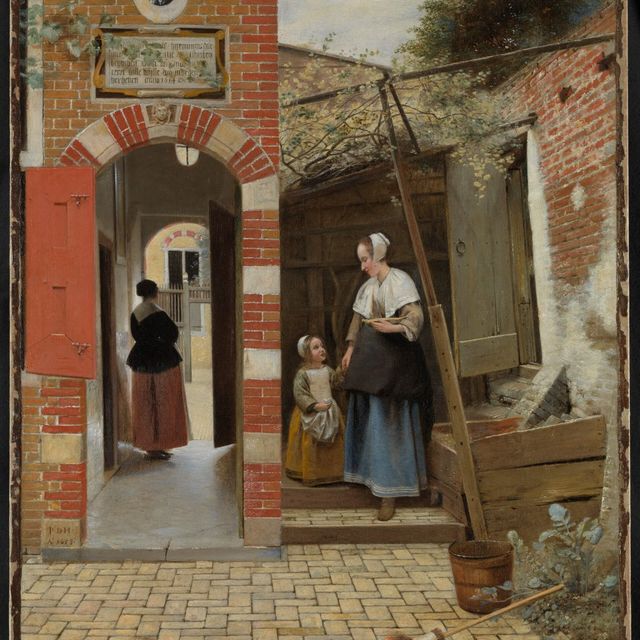
Reinier de Graaf
1641-1673
After Reinier de Graaf finished his medical doctorate papers on the subject of anatomic research into the pancreas, he returned to the Netherlands where he settled in Delft. De Graaf’s discoveries and findings became the foundation of what we know today about reproductive medicine and endocrinology. But despite his successes, his Catholic faith stood in the way of pursuing an academic career in the predominantly Protestant Netherlands.
Today, several hospitals in the Dutch Haaglanden region have merged under the name Reinier de Graaf Groep – a justified tribute to this groundbreaking physician. Delft also has a Reinier de Graaf hospital.
